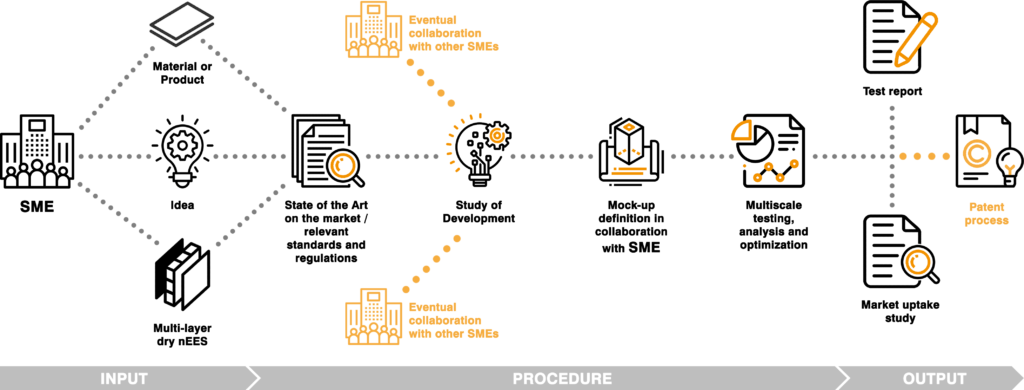
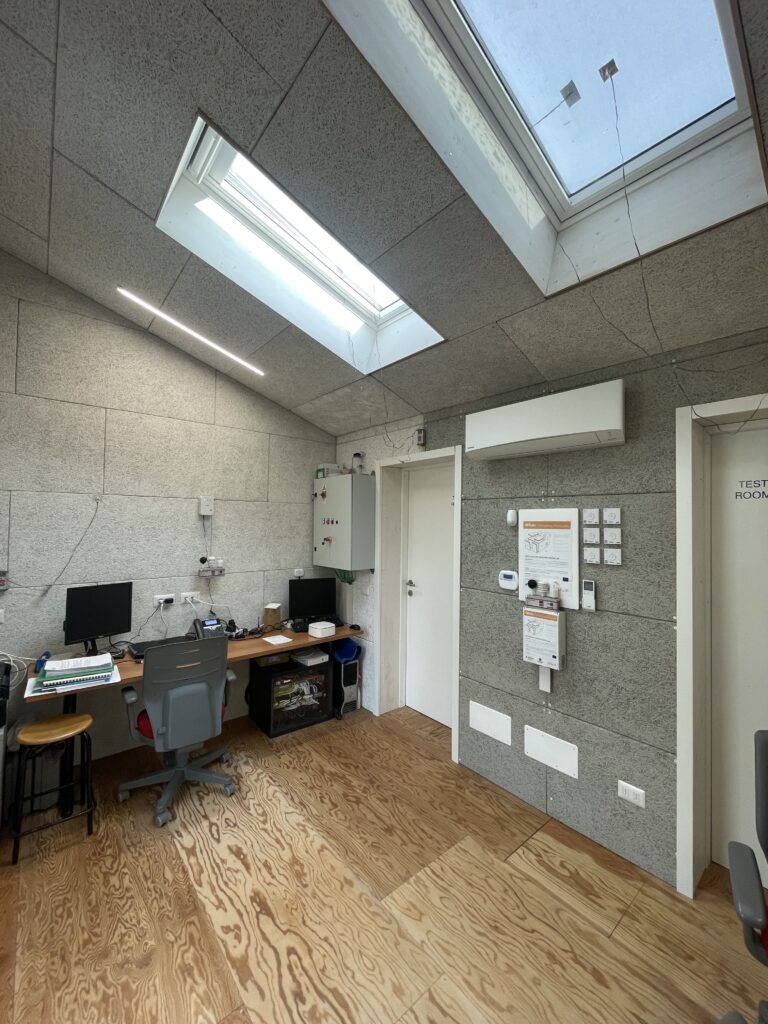
Multilayer Dry NZEB Enabler Envelope Solutions (nEESs) Characterization Facing Health and Safety Requirements
Multilayer Dry NZEB Enabler Envelope Solutions (nEESs) Characterization Facing Health and Safety Requirements
BEEp Services
BEEpilot provides a combination of multiscale modelling, testing and numerical analysis for multi-layer dry nEES, in terms of: thermal, acoustic, air quality and air resistance performance.
1 – Thermal, acoustic, air quality and air resistance tests on full-scale wall nZEB Enabler Envelope Solutions.
2 – Thermal, acoustic, air quality and air resistance tests on full-scale roof nZEB Enabler Envelope Solutions.
3 – Thermal, acoustic, air quality, air resistance and photometric tests on full-scale glazing (windows, roof windows or curtain walls) nZEB Enabler Envelope Solutions.
4 – Thermal, acoustic, air quality, air resistance and photometric tests on full-scale shading (for windows, roof windows or curtain walls) nZEB Enabler Envelope Solutions.
5 – Performance and monitoring tests on different PV panel solutions.
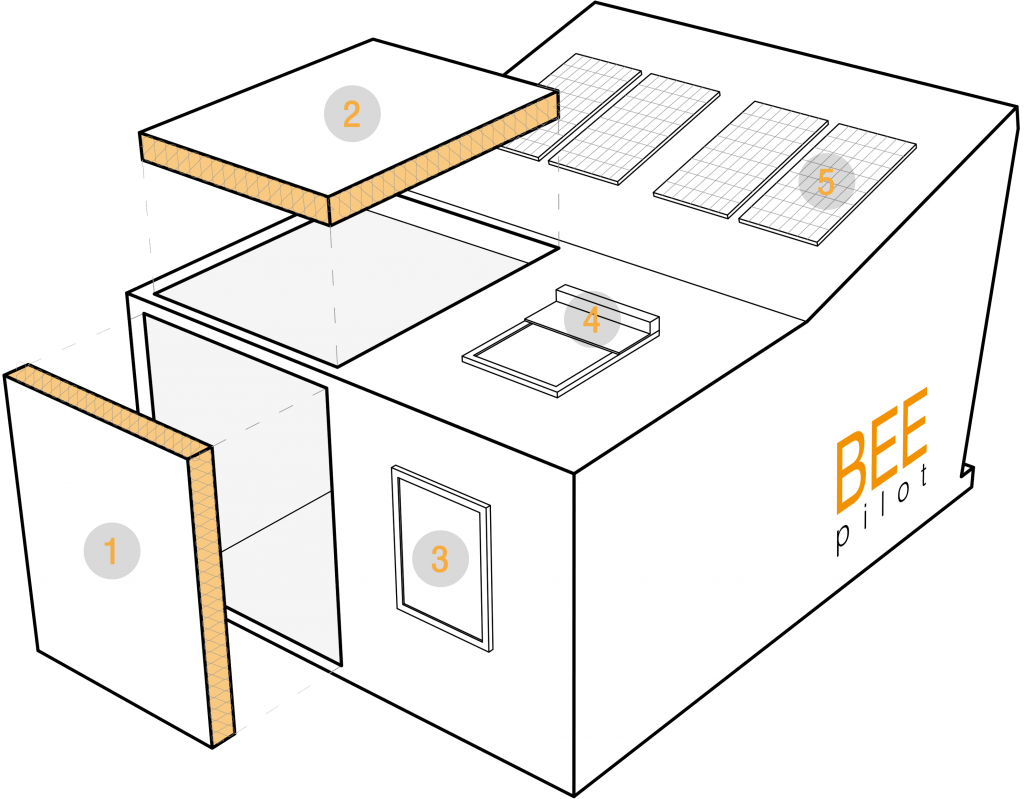
Open Innovation Services and possible scenarios
The Open Innovation Test Bed (OITB) is an innovative, pan-European concept to promote innovation in strategic sectors. It consists of a group of entities (universities, research institutes, companies) operating as a one-stop shop through a single entry point, providing access to open infrastructures and services across Europe (multi-sided virtual marketplace), aiming at the development of new materials and products with an open approach to innovation with mutual exchange of business processes.
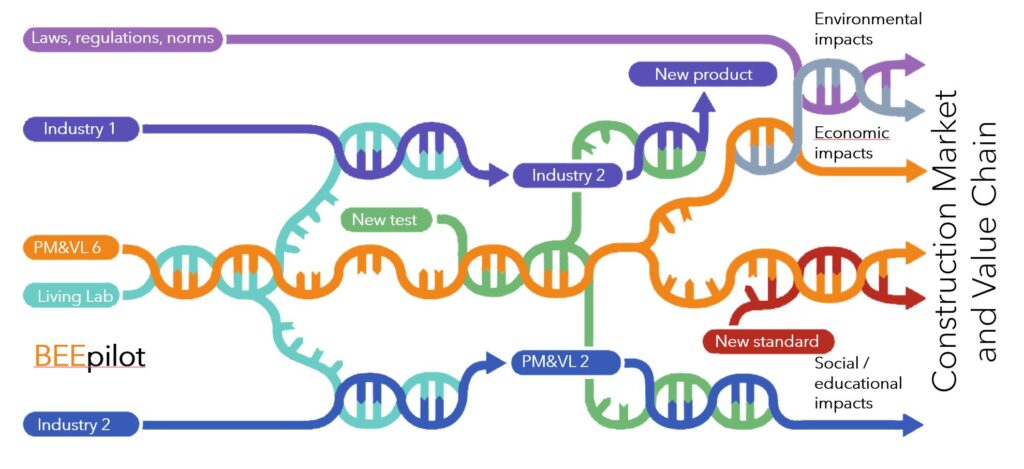
Scenario n. 1: Compliance with standards/regulations
The first scenario that has been identified foresees the definition of specific testing activities and campaigns in order to meet the very practical yet fundamental need of SMEs/industries to comply with the respective relevant standards and regulations for the market entry of their products.
In this context, as outlined below, the starting point and input of Scenario n.1 is the specific material or product of interest for the SME/industry. According to the material/product given, the first step of the methodology is the state-of-the-art research on relevant standards and regulations to comply with, in order to define a standard testing procedure and to design and create a specific mock-up that fully meets the requirements. In this phase, a potential service that the BEEteam could also offer to the SME/industry is its expertise and support in the study of development of the given material/product, in order to improve its performance and better comply with the identified standards and regulations. The main output of Scenario n.1 is the test report, that highlights the main characteristics and performances of the material/product, as well as its compliance with the respective relevant standards and regulations.
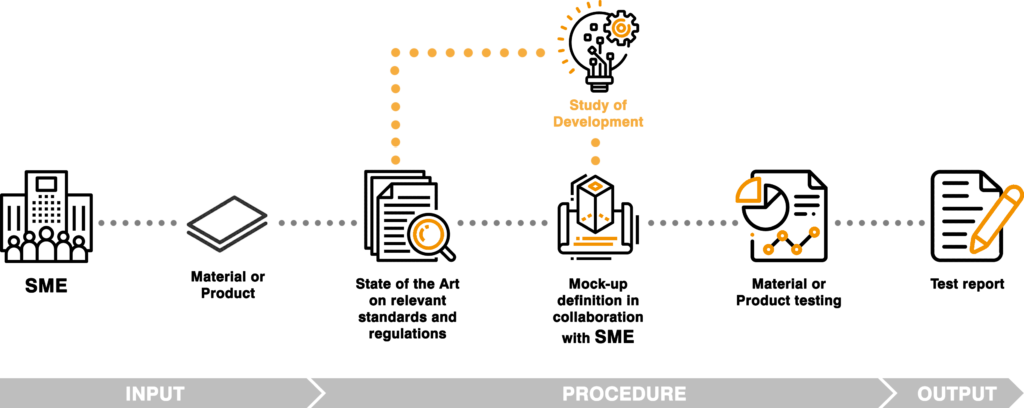
Scenario n. 2: Satisfaction of market demand
The second scenario focuses on the definition of specific testing activities and services to be provided in order to support SMEs/industries satisfy the market demand for their products, in terms of functionality, innovativeness, and performances.
As presented below, to that end, the input of Scenario n.2 could be either a specific material/product, a fully assembled multi-layer dry nEES, or even just an initial concept/idea of the SME/industry. According to the starting point given, the first step of the methodology is the state-of-the-art research on both the standard market practice and relevant standards and regulations to comply with, in order to provide a successful study of development, define a standard testing procedure, and design and make a specific mock-up that fully meets the requirements. In case during this process, especially within the state-of-the-art research, the BEEteam detects a regulatory gap, Scenario n.3 unfolds, and the methodology explained above is therefore integrated with the process described in section 1.3.3. The main outputs of Scenario n.2 are the test report, that highlights the main characteristics and performances of the material/product, as well as its compliance with the respective relevant standards and regulations, and the market uptake study, that aims to assess the potential of the specific material/product, idea or nEES.

Scenario n. 3: Filling of a regulatory gap
The main goal of the third scenario is to prevent and cover eventual regulatory gaps that are arising or still ongoing with reference to specific materials or products. These gaps can be either identified by the BEEteam itself or pointed out by SMEs/industries to facilitate the market entry of their products.
As outlined below, according to the specific material or product given by the SME/industry, the first step of the methodology is the state-of-the-art research on relevant standards and regulations, in order to detect, explore and investigate eventual regulatory gaps. Once the gap has been identified, the next step is the study of development for the definition and proposal of a draft standard and testing procedure, to be outlined in a white paper for the involvement of Policy makers. When the regulatory gap will be successfully filled, the Scenario n.3 process leads back to Scenario n.1, through the design and creation of a specific mock-up according to the requirements that have been set, its testing, and the delivery of a test report, that highlights the main characteristics and performances of the material/product, as well as its compliance with the proposed standard.

Scenario n. 4: Facing and overcoming a challenge
The fourth and last scenario that has been identified aims at supporting SMEs/industries in the development and successful market entry of innovative and pioneering materials/products, ideas or nEESs.
To that end, as presented below, according to the starting point given, the first step of the methodology is the state-of-the-art research on both the standard market practice and relevant standards and regulations to comply with, in order to provide a successful study of development, define a standard testing procedure, and design and make a specific mock-up that fully meets the requirements. In accordance with the client, the process could benefit and be enhanced by the collaboration of other SMEs/industries with the adoption of an Open Innovation approach, that could contribute solving problems, viewing things differently, improving efficiency and effectiveness, and delivering innovative products and solutions both to existent and new markets.
In this process, the BEEteam also offers its expertise and support in the further development and refinement of the specific product/solution, in terms of multiscale testing, analysis and optimization, in order to improve its performance and market attractiveness, as well as to better comply with the identified standards and regulations. The main outputs of Scenario n.4 are the test report, that highlights the main characteristics and performances of the material/product, as well as its compliance with the respective relevant standards and regulations, and the market uptake study, that aims to assess the potential of the specific material/product, idea or nEES. A possible further breakthrough service that the BEEteam could provide as an output of the methodology described for Scenario n.4 is the support to SMEs/industries in the patent process.
